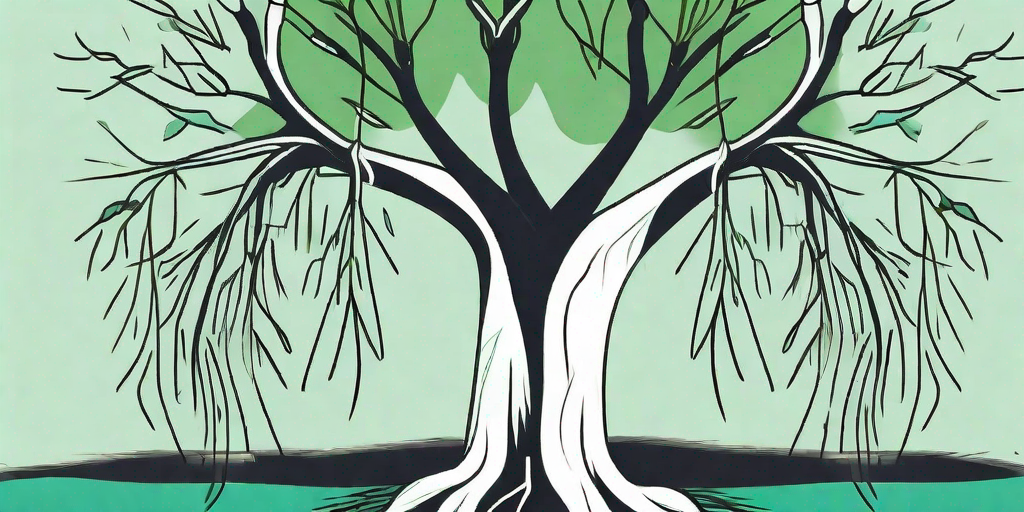
The weeping willow, with its long, drooping branches and beautifully melancholic demeanor, is a sight to behold. But, like a moody teenager, it needs a bit of guidance and direction to grow in the right way. That's where pruning comes in. Pruning, or as I like to call it, 'tree therapy', is an essential part of maintaining the health and aesthetics of your weeping willow. So, grab your gardening gloves, and let's dive into the world of willow trimming!
The Importance of Pruning
Pruning is not just about making your tree look good, although that's a nice bonus. It's about ensuring the health and longevity of your tree. Pruning removes dead or diseased branches, allowing the tree to focus its energy on healthy growth. It's like a spa day for your tree, minus the cucumber slices.
Pruning also helps to maintain the tree's shape and prevent it from becoming too heavy. A well-pruned weeping willow is less likely to suffer from wind damage or collapse under its own weight. So, in essence, pruning is like a workout routine for your tree. No pain, no gain, right?
When to Prune
Timing is everything when it comes to pruning. Prune too early or too late, and you risk damaging the tree. The best time to prune a weeping willow is in late winter or early spring, just before the tree starts to bud. This is when the tree is in its dormant phase, and it's less likely to bleed sap or attract pests.
However, if you notice dead or diseased branches, you can remove them at any time of the year. It's like removing a splinter - the sooner, the better.
How to Prune
Step 1: Gather Your Tools
Before you start, make sure you have the right tools. You'll need a pair of sharp pruning shears for small branches, a pruning saw for larger branches, and a ladder if your tree is tall. And don't forget your safety gear - gloves and safety glasses are a must.
Remember, using blunt tools can damage the tree and make it more susceptible to disease. So, keep your tools sharp and clean. It's like going to the dentist - you wouldn't want them using a rusty old drill, would you?
Step 2: Identify Which Branches to Prune
Not all branches need to be pruned. Start by looking for dead, diseased, or damaged branches. These are the branches that are most likely to cause problems for your tree.
Next, look for branches that are crossing or rubbing against each other. These branches can cause wounds that make the tree vulnerable to pests and disease. It's like a tree version of a sibling rivalry - sometimes, you just need to separate them for the good of the family.
Step 3: Make the Cut
When you're ready to make the cut, start by making a small notch on the underside of the branch, about a foot away from the trunk. This prevents the branch from tearing the bark when it falls.
Next, cut the branch off about an inch above the notch. Make sure to cut at an angle, so water doesn't pool on the cut surface. Finally, smooth out the cut with a knife to promote healing.
Aftercare
After pruning, it's important to take care of the tree to help it recover. Water the tree regularly, especially during dry periods, and apply a slow-release fertilizer to promote healthy growth.
Keep an eye out for signs of disease or pests, such as discolored leaves or holes in the bark. If you notice anything unusual, consult with a local arborist or extension service. Remember, it's better to be safe than sorry!
Frequently Asked Questions
- Can I prune a weeping willow in the summer?
It's best to avoid pruning in the summer, as this is when the tree is most active and is more likely to bleed sap. However, if you notice dead or diseased branches, you can remove them at any time.
- How much can I prune at once?
As a general rule, you should not remove more than 25% of the tree's canopy at once. Over-pruning can stress the tree and make it more susceptible to disease.
- Do I need to seal the cuts?
While it was once common practice to seal pruning cuts with a wound dressing, most experts now advise against it. The tree is usually able to heal itself, and wound dressings can actually trap moisture and promote the growth of disease.
And there you have it, folks! A comprehensive guide to pruning your weeping willow. Remember, pruning is not just about aesthetics - it's about maintaining the health and longevity of your tree. So, don't be afraid to get out there and give your tree a little trim. It might just thank you with a burst of healthy, beautiful growth!















